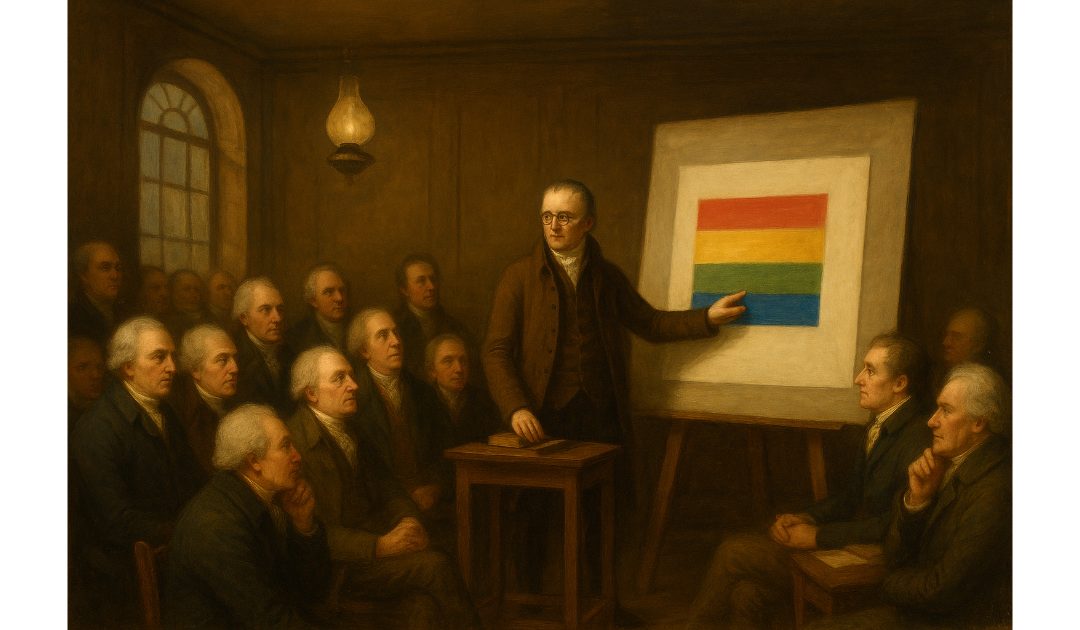On the 31st of October, 1794, John Dalton gave a lecture to the Manchester Literary and Philosophical Society on the subject of colour blindness. He suffered red green colour blindness, which is a bit of a sore subject with me. I was at primary school when the dreaded ishihara test, the book with patterns letters and numbers concealed amid coloured dots, first blighted my life. I was told that I was red green colour blind and couldn’t be a pilot or an electrical engineer, which was a bit of a blow. Anyway, back to Dalton. This was the first recorded scientific study on colour vision deficiency, leading to the condition being colloquially referred to as “Daltonism.” His hypothesis, though later proven inaccurate, sparked further interest and research into the condition.
John Dalton, born on the 6th of September, 1766, in Eaglesfield, Cumberland, England. He was born into a Quaker family, which played a significant role in shaping his character and intellectual pursuits. Despite limited formal education due to his family’s modest means, Dalton excelled academically from an early age. By the age of 12, he was assisting in teaching at a local Quaker school and later became the principal of a school in Kendal alongside his brother. His insatiable curiosity and self-discipline led him to be largely self-taught in subjects such as mathematics, meteorology, and natural philosophy.
Dalton’s most monumental contribution to science was his atomic theory, formally introduced in 1808 through his seminal work, “A New System of Chemical Philosophy.” This theory revolutionised the understanding of matter, asserting that all substances are composed of tiny, indivisible particles called atoms. Dalton proposed several key postulates:
- Elements consist of indivisible atoms.
- All atoms of a given element are identical in mass and properties.
- Atoms of different elements differ in mass and chemical properties.
- Compounds are formed by the combination of atoms in simple, fixed ratios.
- Chemical reactions involve rearrangement of atoms, without their creation or destruction.
Dalton’s methodical approach included assigning relative atomic weights to elements, marking the beginnings of the periodic classification of elements. His atomic symbols and concepts provided a systematic framework that simplified the study of chemical reactions and compounds.
Dalton’s atomic theory profoundly influenced the development of modern chemistry and physics. His work provided the basis for later scientific discoveries, including Dmitri Mendeleev’s periodic table and the development of quantum mechanics. His meticulous scientific methods and emphasis on empirical data set new standards for scientific research.
In recognition of his achievements, Dalton received numerous honours during his lifetime. He was elected a Fellow of the Royal Society in 1822 and was awarded the Royal Medal in 1826. Despite his accolades, Dalton remained modest, continuing his scientific work with dedication until his death on the 27th of July, 1844.

